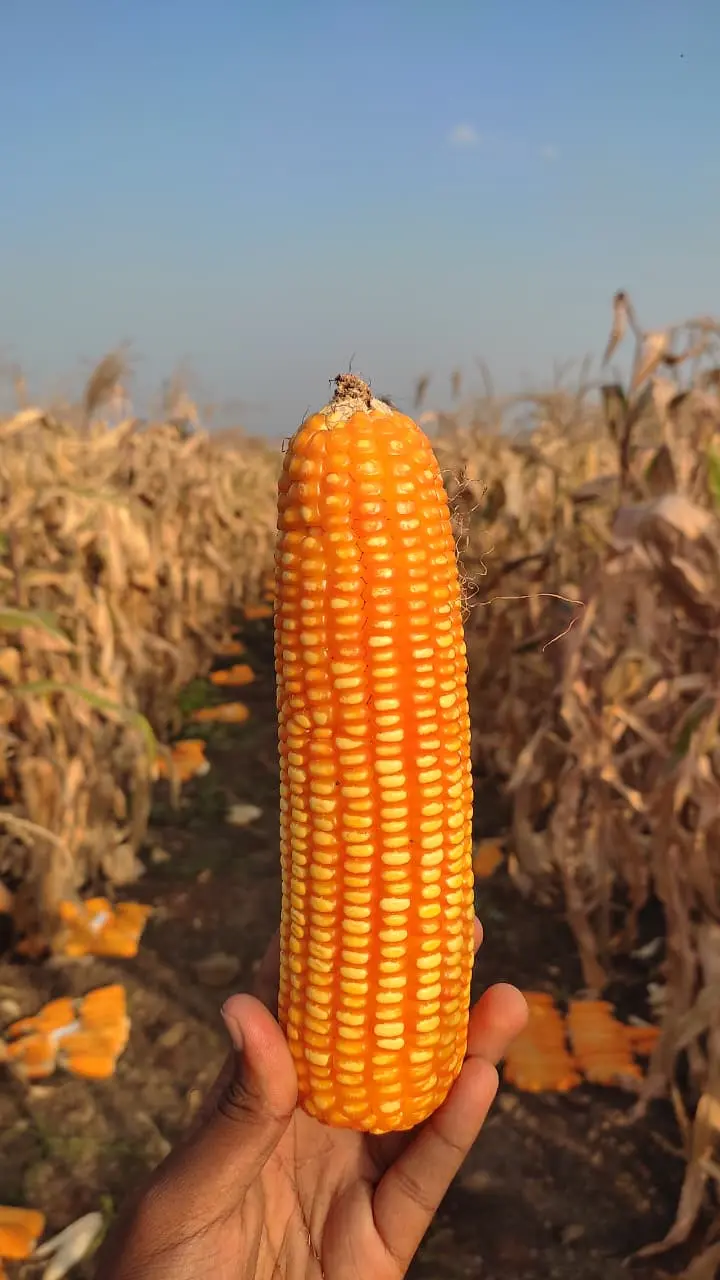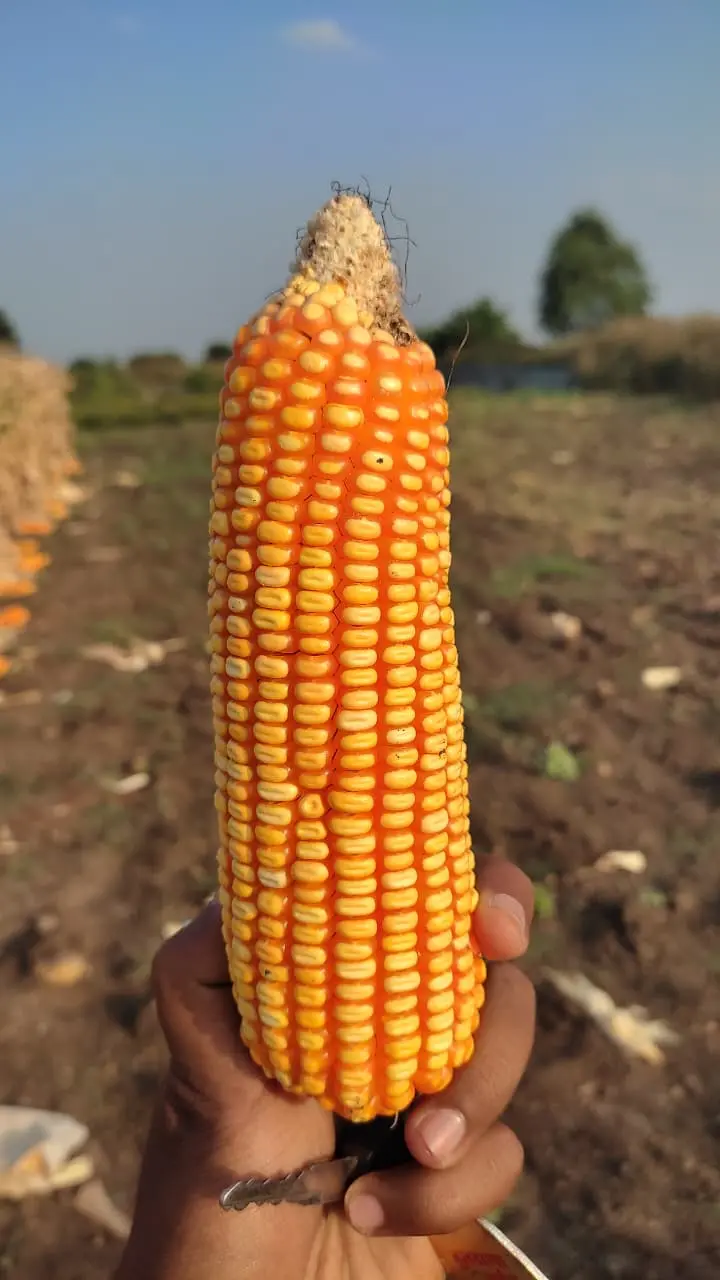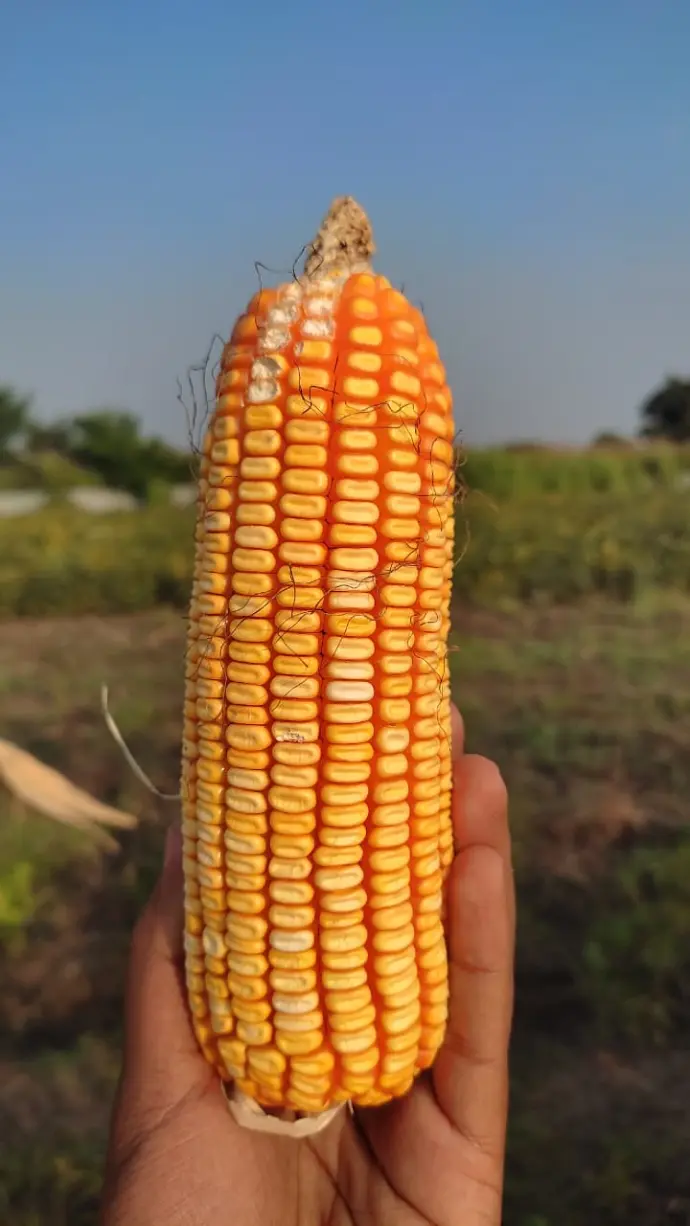Selection is the most important step in hybrid development. To identify the best maize hybrid in preliminary yield trials, several factors are considered. Major selection criteria include yield, plant height and duration, along with grain characteristics such as colour, shelling percentage and grain type (flint, semi dent and dent).
Farmers generally prefer maize hybrids with flint type grains. This raises an important question Is grain type only a morphological trait or is it also related to the rate of moisture loss? To check this, five hybrids having same maturity of each grain type were evaluated. The weight of dehusked cobs was recorded on two consecutive days and the difference was used to estimate moisture loss.



The results showed that flint types (6.7%) lost less moisture than semi dent (8.1%) and dent (9.9%) types. The similar results were observed in published research papers. The differences in moisture loss can be influenced by grain structure and starch composition. Dent type grains dry faster due to their larger proportion of soft starch in the center and the dented region, which increases exposed surface area. In contrast, flint-type grains lose moisture more slowly because the hard endosperm surrounds the softer, floury center, reducing the rate of evaporation.
Although the results indicate that flint semi dent and dent types lose moisture at different rates, the rate of moisture loss may also be influenced by the maturity duration of the hybrid. However, while grain type affects drying rate and grain quality, it does not influence yield as the primary selection criterion in hybrid development. Instead, it can be considered alongside yield, maturity and shelling percentage to identify balanced hybrids that perform well both in the field and after harvest.